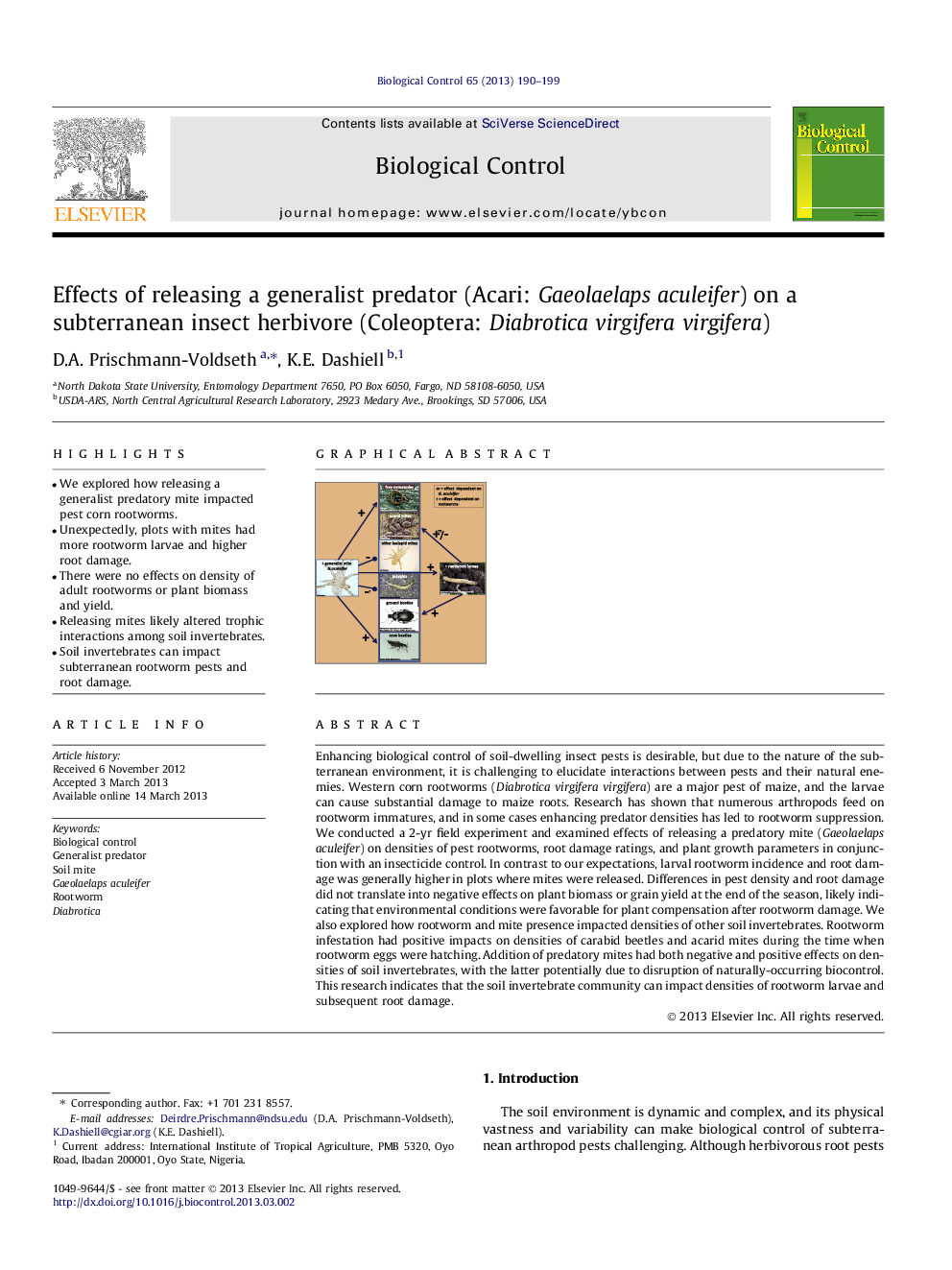| Article ID | Journal | Published Year | Pages | File Type |
|---|---|---|---|---|
| 4504009 | Biological Control | 2013 | 10 Pages |
•We explored how releasing a generalist predatory mite impacted pest corn rootworms.•Unexpectedly, plots with mites had more rootworm larvae and higher root damage.•There were no effects on density of adult rootworms or plant biomass and yield.•Releasing mites likely altered trophic interactions among soil invertebrates.•Soil invertebrates can impact subterranean rootworm pests and root damage.
Enhancing biological control of soil-dwelling insect pests is desirable, but due to the nature of the subterranean environment, it is challenging to elucidate interactions between pests and their natural enemies. Western corn rootworms (Diabrotica virgifera virgifera) are a major pest of maize, and the larvae can cause substantial damage to maize roots. Research has shown that numerous arthropods feed on rootworm immatures, and in some cases enhancing predator densities has led to rootworm suppression. We conducted a 2-yr field experiment and examined effects of releasing a predatory mite (Gaeolaelaps aculeifer) on densities of pest rootworms, root damage ratings, and plant growth parameters in conjunction with an insecticide control. In contrast to our expectations, larval rootworm incidence and root damage was generally higher in plots where mites were released. Differences in pest density and root damage did not translate into negative effects on plant biomass or grain yield at the end of the season, likely indicating that environmental conditions were favorable for plant compensation after rootworm damage. We also explored how rootworm and mite presence impacted densities of other soil invertebrates. Rootworm infestation had positive impacts on densities of carabid beetles and acarid mites during the time when rootworm eggs were hatching. Addition of predatory mites had both negative and positive effects on densities of soil invertebrates, with the latter potentially due to disruption of naturally-occurring biocontrol. This research indicates that the soil invertebrate community can impact densities of rootworm larvae and subsequent root damage.
Graphical abstractFigure optionsDownload full-size imageDownload as PowerPoint slide
